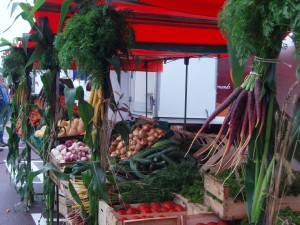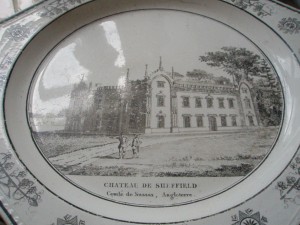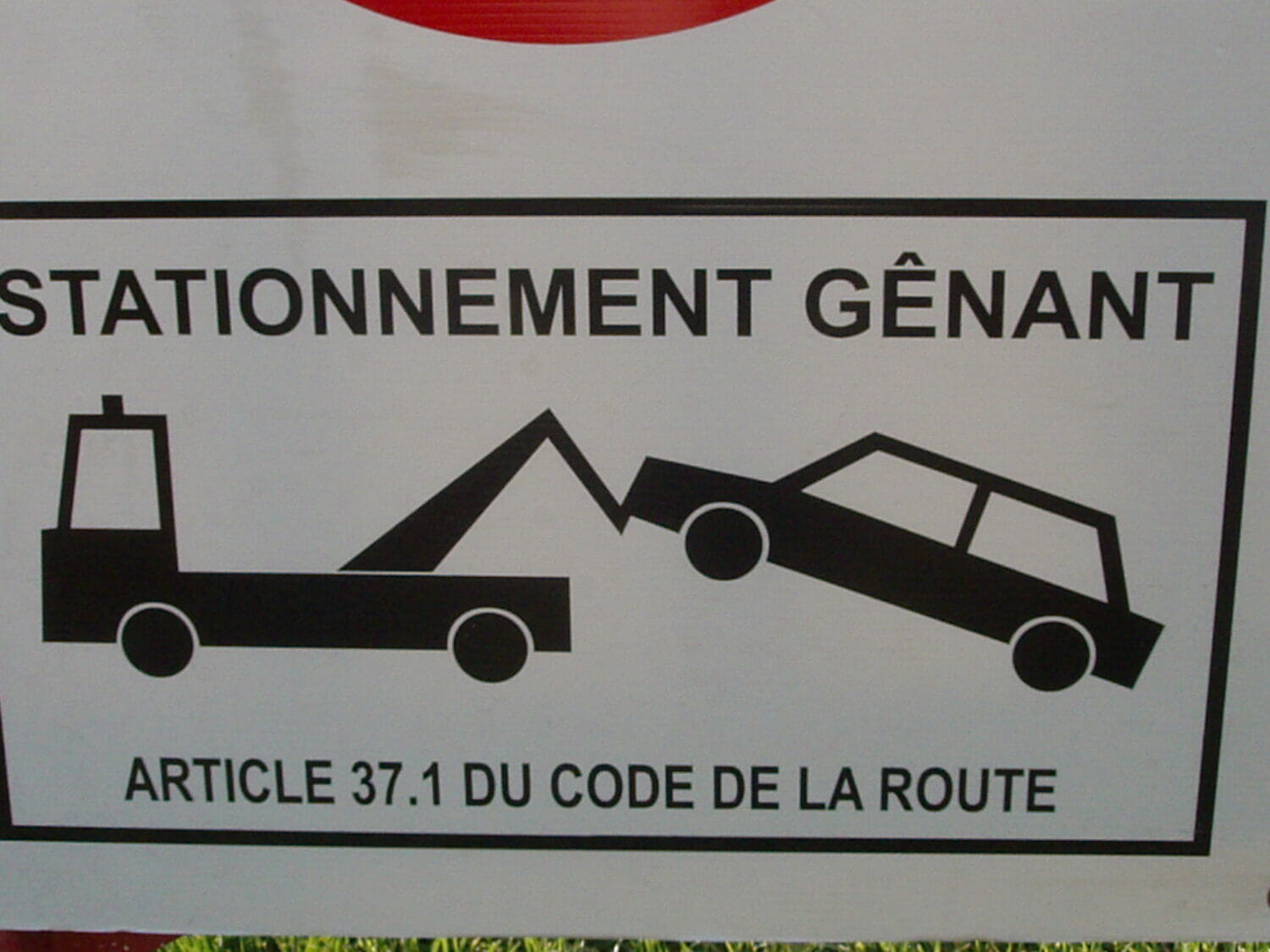Monique had set the automatic coffee maker for 5.30am and in the vast, quiet, stone kitchen still smelling of last night’s embers, I poured coffee for us and also for Jean-Pierre, another dealer, who was also heading to a vide-grenier nearby. He, like many other dealers, had given up his shop but continued with large fairs and Salons. He reminisced about one apartment clearance he had done in Montmartre. The apartment had belonged to the seamstress of a very popular singer in the 1960’s and 70’s. “Ah,” he said, “you can imagine the treasure we found in those three little rooms. So many costumes, beautifully made, and such memorabilia…..”
 It was a grey, splashy, overcast morning. As we left I glanced back at the manor house, always sad to leave it. At Créances Graham stayed to slumber in the van and I pulled my trolley down the wet street towards a man in a high-vis jacket and the stands that were already smoking with saucisses. Two others were loading up large metal rotisseries with logs, ready to take legs of lamb and chickens.
It was a grey, splashy, overcast morning. As we left I glanced back at the manor house, always sad to leave it. At Créances Graham stayed to slumber in the van and I pulled my trolley down the wet street towards a man in a high-vis jacket and the stands that were already smoking with saucisses. Two others were loading up large metal rotisseries with logs, ready to take legs of lamb and chickens.
This vide-grenier was part of La Fete de la Carotte. Leeks and carrots grew beautifully here in the sandy soil just inland from the coast. Stalls were framed with bunches of spindly purple carrots, and piled with radishes and leeks decoratively fanned out. There were stalls selling carrot cake with raisins, carrot cake with cumin, carrot cake with onion. Carrot jam even. The local roundabout carried a large tiled crest of a carrot as one approached from the north and one of a leek as one approached from the south.
 Amongst this cornucopia, and a stall selling Grease Soup, were the brocante stalls laden with enamel ware, crates of crockery, dusty and rained on, bottle carriers, coffee grinders, wine coolers, galvanised bassines and jugs. I found seven marvellous 18th century Creil hexagonal plates with black and white transfer images – some of English country houses, in their 18th century architectural glory.
Amongst this cornucopia, and a stall selling Grease Soup, were the brocante stalls laden with enamel ware, crates of crockery, dusty and rained on, bottle carriers, coffee grinders, wine coolers, galvanised bassines and jugs. I found seven marvellous 18th century Creil hexagonal plates with black and white transfer images – some of English country houses, in their 18th century architectural glory.
The village brass band, followed by a vintage truck decorated with yes, vegetables, and a band of village folk in 1930’s clothes processed by. The men in work denims and wooden clogs stuffed with straw, pitchforks over their shoulders. The women in full black skirts, neat little black hats, carrying shopping baskets. The clothes and the sound of the clogs on the street were echoed a slower, simpler time.
It was a long drive then down to the Vendée. Holiday traffic clogged the peripheriques at Rennes and Nantes, but by late afternoon we arrived at St Christophe where dealers were setting up for the next day’s market. I found Lilianne straight away, busy arranging her linens. “I have made a tarte aux tomates for this evening and we are sleeping in the van tonight”, she said. The afternoon had turned golden and warm, and it was a pleasure to wander around the field, saying hello to some of the dealers I knew. I could have stayed on but Graham was in favour of dinner and our night’s lodging.





